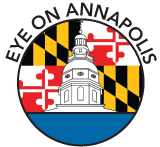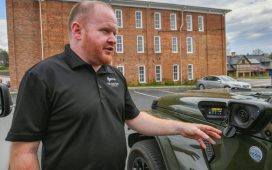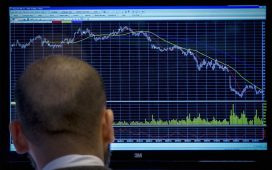With Maryland projected to be short billions of dollars for its long-term transportation projects, state lawmakers next session may have to scale back high-profile plans.
Without a new revenue stream, Democratic lawmakers, who hold a supermajority in both legislative chambers, are expecting “fairly serious cuts” to some projects and services, according to a key subcommittee chair.
The decisions will come months after Gov. Wes Moore revived plans to build an east-west Red Line transit network in Baltimore that is expected to cost several billion dollars.
 The Maryland Transit Administration hopes to settle on a route and mode of transportation by the spring of 2024, which will narrow the potential cost.
The Maryland Transit Administration hopes to settle on a route and mode of transportation by the spring of 2024, which will narrow the potential cost.
Taxpayers are also awaiting the increasingly expensive and delayed Purple Line light rail that’ll connect Bethesda and New Carrollton, a new Amtrak tunnel under West Baltimore and plans for a Southern Maryland Rapid Transit system to save residents time on their commutes to Washington, D.C., and its suburbs in Maryland and Virginia.
Lawmakers with a hand in the state’s transportation policies will look to prepare the public for electric vehicle goals that have been unpopular among voters, such as ending the sale of gas-powered vehicles by 2035.
They’ll also take up proposals to improve protections for roadside workers and pedestrians following recent tragedies, including in April, when six construction workers died after an out-of-control sedan entered an active construction zone on Interstate 695, and in mid-November, when two children died after a vehicle struck them while walking to school in Riverdale Park.
A late-summer draft of Maryland’s six-year Consolidated Transportation Program projected the state would be short more than $2 billion needed over that period to meet its spending obligations, though a legislative projection has placed the shortfall closer to $3 billion. The estimates don’t take into account money needed for some of Moore’s transportation priorities, like the Red Line.
In the fiscal year that begins in July, the funding gap is projected to be more than $500 million.
“If we can’t meet these goals and these priorities, we need to be forthright about that,” state Del. Marc Korman, a Montgomery County Democrat who chairs the House Environment and Transportation Committee, said in a phone interview.

Lawmakers are expecting to receive an updated, balanced six-year plan from the state Department of Transportation in the coming weeks.
“Step one is the administration has to submit a balanced proposal in January when they put the budget in,” Korman said. “The onus is on them.”
Moore said to reporters Wednesday that in the coming weeks his administration will present an updated plan to pay for and prioritize projects that will feature a “very clear understanding” of why the administration prioritized some projects over others.
The Department of Transportation declined to make Secretary Paul Wiedefeld available for an interview for this story.
Del. Courtney Watson, a Howard County Democrat who chairs the House of Delegates subcommittee on transportation and the environment, said she’s met with Wiedefeld several times since the end of last session and said the secretary has a “very good handle” on the transportation funding shortfall.
Watson said she hopes the administration follows Wiedefeld’s recommendations for balancing transportation spending, but that it’s “inevitable there will be reductions in service or in project cuts.”
Last session, the legislature established a commission to recommend changes to how the state prioritizes and pays for transportation projects.
Among the top priorities of the 30-member commission, which includes Korman and five other legislators, is finding a revenue substitute for the gas tax — which, after a century of being a primary funding source for transportation projects nationwide, is expected to decline significantly with rising fuel efficiency and the surging sales of electric vehicles.
County and municipal governments have warned commission members against lowering their portion of highway user revenues — which includes the gas tax — that help pay for local roads, bridges, sidewalks and other projects. Local officials said they already pay an oversized share of transportation projects.
Given that the number of zero-emission vehicles in the state is expected to increase from about 84,000 this year to more than 1.3 million 2031, representing more than one in four registered passenger vehicles, commission members have considered whether the state should adopt new registration fees for electric and hybrid plug-in vehicles to help offset the revenue decline.
It appears likely the commission will recommend that lawmakers either require a fee for electric or hybrid vehicles or authorize the Department of Transportation to collect fees, though the fee alone is expected to make only a small dent in the revenue gap.

Maryland’s minority party has been displeased with the direction some of the commission’s discussions, which have also included talks of increasing tolls, and its potential recommendations.
Senate Minority Leader Steve Hershey, a Republican representing the northern Eastern Shore who serves on the commission, said there hasn’t been enough evidence showing that the state isn’t taking in enough revenue to build and maintain roads and bridges through gas tax contributions.
The state’s “perceived funding issues,” he said, arise when officials looks to stretch gas tax revenue to subsidize other transit projects.
“The meetings so far have really only focused on ways to generate additional revenue from motorists and motor vehicles to further subsidize mass transit operations and projects,” Hershey said in a statement.
Hershey continued calls for Moore to scale back his administration’s electric vehicle goals, saying they will push rural residents and those with longer commutes to purchase cars over state lines, hindering Maryland’s dealerships.
Following California’s lead, Maryland is set to ban new gas-powered vehicle sales by 2035 as part of what Moore’s office has dubbed a “clean energy revolution.”
A majority of those surveyed in a recent political poll oppose the ban, as do Republican lawmakers, though neither Moore nor Democratic leaders in the legislature have given any signs of walking it back.
The legislature may enact measures to make the shift to electric vehicles more palatable and affordable.
Korman said lawmakers will look to pave the way for more charging stations, lower the cost of electric vehicles for potential buyers and make incentives easier to access, like including a rebate in the upfront cost of a vehicle rather than having a buyer apply for the savings on the back end.

 Listen to this article
Listen to this article








